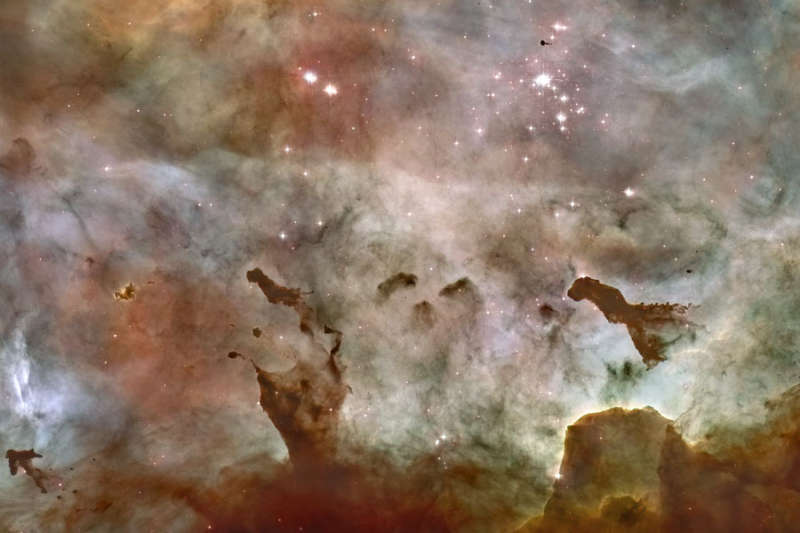Credit & Copyright: NASA,
ESA,
N. Smith
(U. California, Berkeley)
et al.,
and The Hubble Heritage Team
(STScI/AURA)
Explanation:
What dark forms lurk in the mists of the Carina Nebula?
These ominous figures are actually
molecular clouds,
knots of molecular gas and
dust so thick they have become
opaque.
In comparison, however, these clouds are typically much less dense than
Earth's atmosphere.
Pictured above is part of the most detailed image of the
Carina Nebula ever taken, a part where dark
molecular clouds are particularly prominent.
The entire
Carina Nebula
spans over 300
light years
and lies about 7,500 light-years away in the
constellation of Carina.
NGC 3372, known as the Great Nebula in Carina,
is home to massive stars and changing nebula.
Eta Carinae, the most energetic
star in the nebula, was one of the brightest stars in the sky in the 1830s, but then
faded dramatically.
Wide-field
annotated and
zoomable versions of the larger image composite are also available.
digg_url = 'http://apod.nasa.gov/apod/ap080528.html'; digg_skin = 'compact';
1999 2000 2001 2002 2003 2004 2005 2006 2007 2008 2009 2010 2011 2012 2013 2014 2015 2016 2017 2018 2019 2020 2021 2022 2023 2024 2025 |
Yanvar' Fevral' Mart Aprel' Mai Iyun' Iyul' Avgust Sentyabr' Oktyabr' Noyabr' Dekabr' |
NASA Web Site Statements, Warnings, and Disclaimers
NASA Official: Jay Norris. Specific rights apply.
A service of: LHEA at NASA / GSFC
& Michigan Tech. U.
|
Publikacii s klyuchevymi slovami:
carina nebula - dark cloud - molecular cloud - tumannost' Kilya - temnaya tumannost' - Molekulyarnye oblaka
Publikacii so slovami: carina nebula - dark cloud - molecular cloud - tumannost' Kilya - temnaya tumannost' - Molekulyarnye oblaka | |
Sm. takzhe:
Vse publikacii na tu zhe temu >> | |
